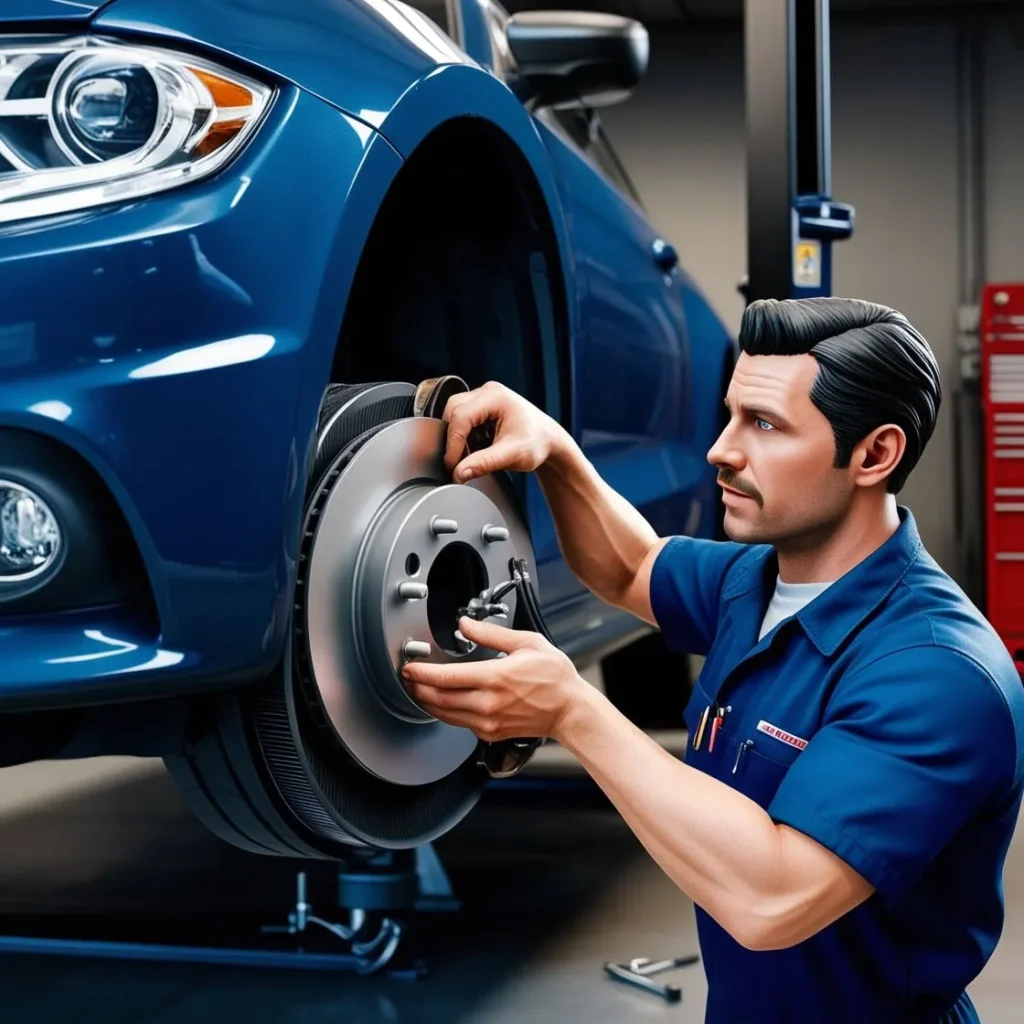Brake Maintenance: How to Keep Your Car Safe
Brake maintenance is one of the most crucial tasks you can do to ensure your vehicle’s safety. Whether you’re driving in a busy city or on a rural road, properly functioning brakes are vital. A well-maintained brake system helps you avoid accidents, keeps passengers safe, and extends the lifespan of your vehicle. In this article, we’ll explore everything you need to know about brake maintenance, from when to service them to the signs that something might be wrong.

Index
Understanding the Importance of Brake Maintenance
Brakes are essential to your car’s safety system. They provide the ability to stop or slow your vehicle when necessary, preventing collisions and ensuring smooth operation. Over time, wear and tear on the brakes is inevitable, so regular maintenance is required to keep them in top shape. Neglecting your brakes can lead to severe safety issues, such as brake failure, which can be catastrophic.
There are different types of brake systems, including disc and drum brakes, but all have one thing in common—they need regular check-ups. By staying on top of brake maintenance, you ensure your brakes perform optimally, whether you’re making a quick stop in traffic or descending a steep hill.
When Should You Replace Your Brakes?
Knowing when to replace your brakes is crucial to maintaining road safety. Most automotive experts recommend checking your brakes every 10,000 to 12,000 miles, but it can vary based on driving habits and vehicle type. For instance, if you often drive in stop-and-go traffic or frequently tow heavy loads, your brakes may wear out faster than the average driver’s. Key signs that indicate it’s time to replace your brakes include:
- Squeaking or Grinding Noises: Unusual sounds when applying the brakes often indicate worn brake pads or shoes.
- Vibrations: If your car vibrates when braking, it could be a sign of warped rotors or uneven wear.
- Longer Stopping Distances: If it takes longer for your vehicle to stop, the brakes may be worn out and need replacing.
- Brake Warning Light: A dashboard light indicating an issue with the brake system should never be ignored.
Regular inspections by a mechanic can catch these issues before they become more severe and costly to repair.
How to Inspect Your Brakes
Performing routine brake inspections is essential, even if you’re not a professional mechanic. Here are a few steps you can follow to ensure your brakes are in good condition:
- Visual Inspection: Check the thickness of your brake pads. If they are less than 1/4 inch thick, it’s time for a replacement. Additionally, inspect the brake rotor for any deep grooves or scoring.
- Check Brake Fluid: Your brake fluid should be clean and at the appropriate level. Low brake fluid can indicate a leak or other issues in the hydraulic system.
- Listen for Sounds: Unusual noises such as squealing or grinding when braking can indicate worn-out parts.
- Test Brake Response: While driving, ensure that your brakes are responsive and that the vehicle doesn’t pull to one side when braking.
Remember, a professional inspection should be done at least once a year to catch any issues you might miss.
Common Brake Maintenance Tasks
Maintaining your brakes involves more than just replacing worn pads. Here are a few key tasks that should be part of your brake maintenance routine:
- Brake Pad Replacement: Brake pads naturally wear down over time and should be replaced when they become too thin. Worn pads can damage the rotors, leading to more costly repairs.
- Brake Fluid Check and Replacement: Brake fluid absorbs moisture over time, which can reduce its effectiveness. Changing the fluid regularly helps maintain braking performance.
- Rotor Resurfacing or Replacement: If your rotors are warped or damaged, they can be resurfaced or replaced to ensure smooth braking.
- Brake Line Inspection: Brake lines can develop leaks, which compromises the hydraulic system. Regular inspection ensures there are no leaks or cracks.
By staying on top of these maintenance tasks, you can prevent more expensive and dangerous problems from arising.
Cost of Brake Maintenance
The cost of maintaining your brakes can vary depending on the make and model of your vehicle, the condition of your brake system, and the type of service required. On average, brake pad replacement can cost anywhere from $150 to $300 per axle, while a complete brake system overhaul, including rotors and fluid, may cost upwards of $500 to $1,000.
It’s important to consider that while brake maintenance may seem costly upfront, it is far less expensive than dealing with the consequences of brake failure or major repairs. Prioritizing regular brake maintenance not only saves you money in the long run but also ensures that you’re driving a safe vehicle.
Best Practices for Extending Brake Life
There are several things you can do to extend the life of your brakes and ensure they function effectively for as long as possible:
- Avoid Hard Braking: Constant hard braking wears out your brake pads faster. Try to anticipate stops and slow down gradually.
- Reduce Load: Carrying heavy loads or towing trailers can increase brake wear, so avoid overloading your vehicle.
- Use Engine Braking: When driving downhill, use engine braking to slow the vehicle, reducing the strain on your brakes.
- Regular Maintenance: Stick to a regular brake maintenance schedule, including pad and fluid checks.
Following these best practices not only extends the life of your brakes but also improves fuel efficiency and the overall health of your vehicle.
Conclusion
Brake maintenance is an essential aspect of vehicle care that should never be overlooked. Regular inspections and timely replacements of brake components will keep your vehicle safe on the road and prevent costly repairs down the line. Whether it’s replacing worn-out brake pads, checking the fluid, or inspecting the rotors, staying proactive with your brake system ensures you’re driving a reliable and safe car.
By understanding the importance of proper brake maintenance and staying on top of routine tasks, you can keep your car in excellent condition and avoid dangerous situations caused by brake failure.
Read more about car maintenance clicking here.
